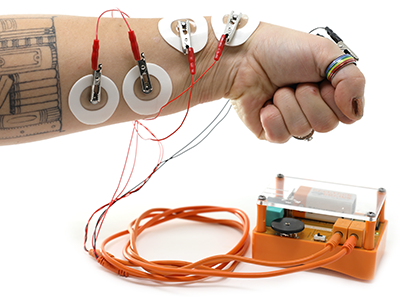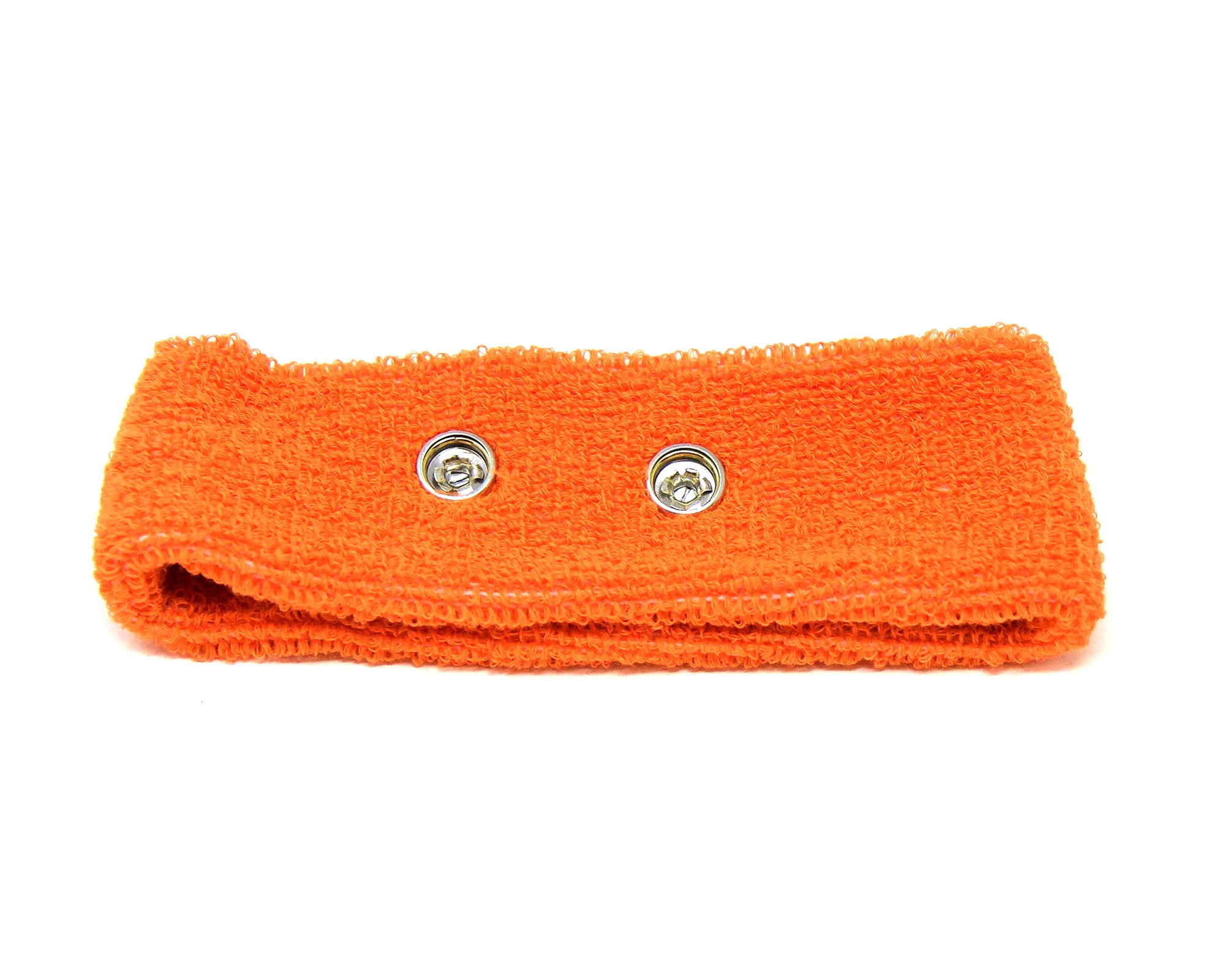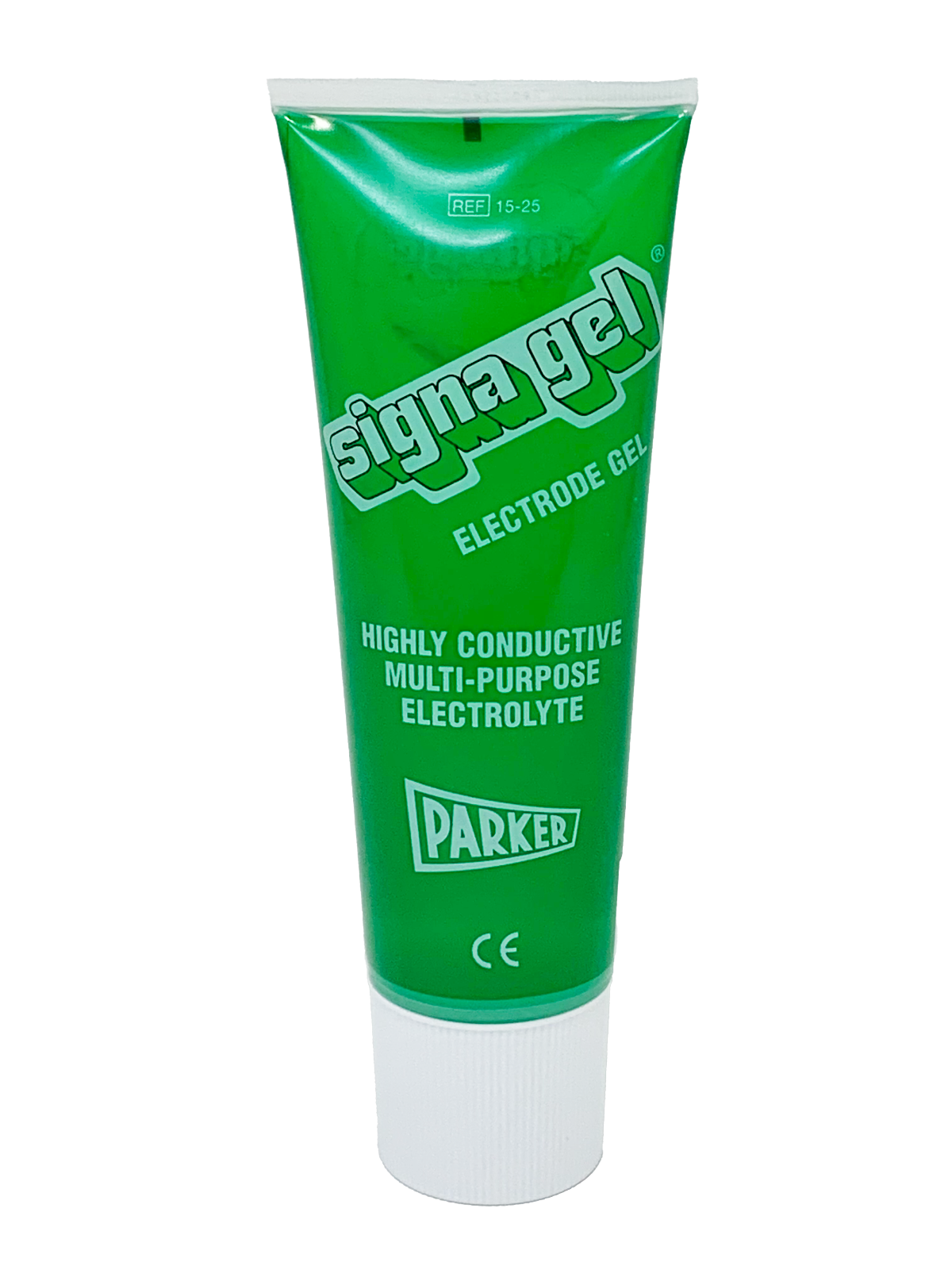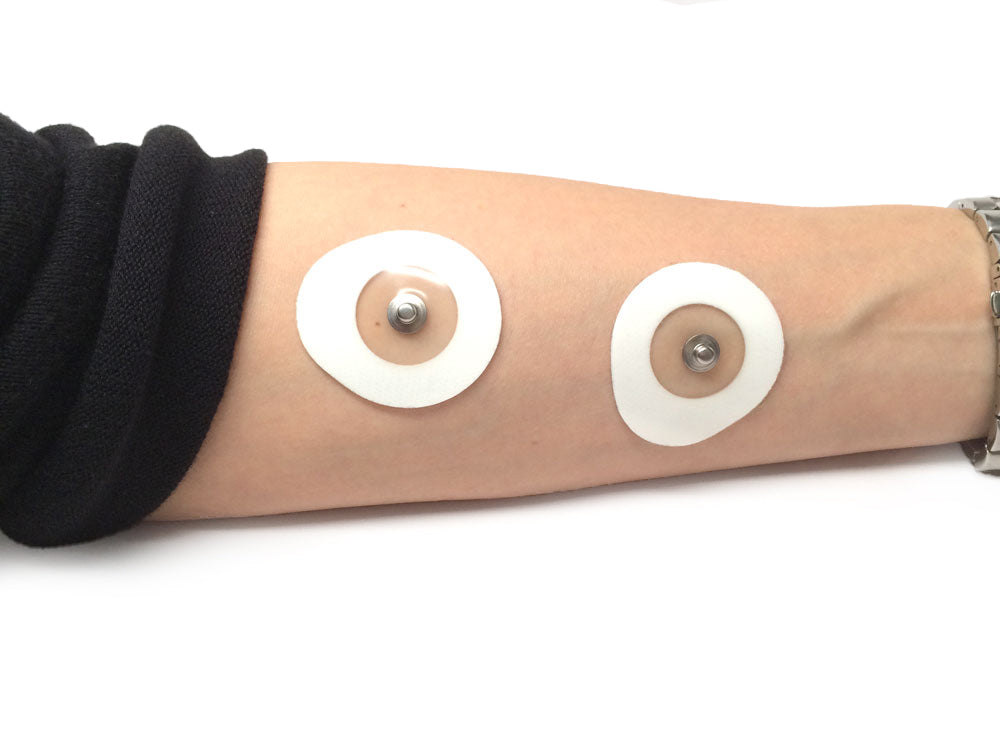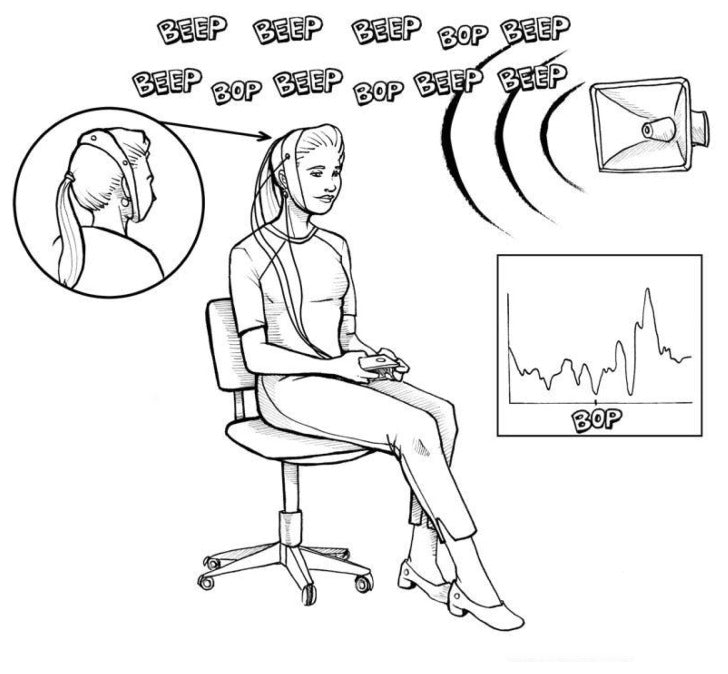
The Consciousness Detector – P300 Oddball Task

Record the P300 — a burst of brain activity that appears about 300 ms after you hear something unexpected — using only the Human SpikerBox, a BYB EEG headband, and a pre‑made sound file.
About experiment
What Will You Learn?
- How the oddball paradigm evokes the P300 event‑related potential.
- How to capture parietal EEG with the Human SpikerBox and SpikeRecorder.
- How to average standard and oddball trials to reveal the P300 peak.
Background
The P300 is a positive EEG wave peaking about 300 ms after an unexpected tone and is largest over Pz. A single‑channel, low‑cost setup can detect it after simple trial averaging (PMC11441432).
Procedure
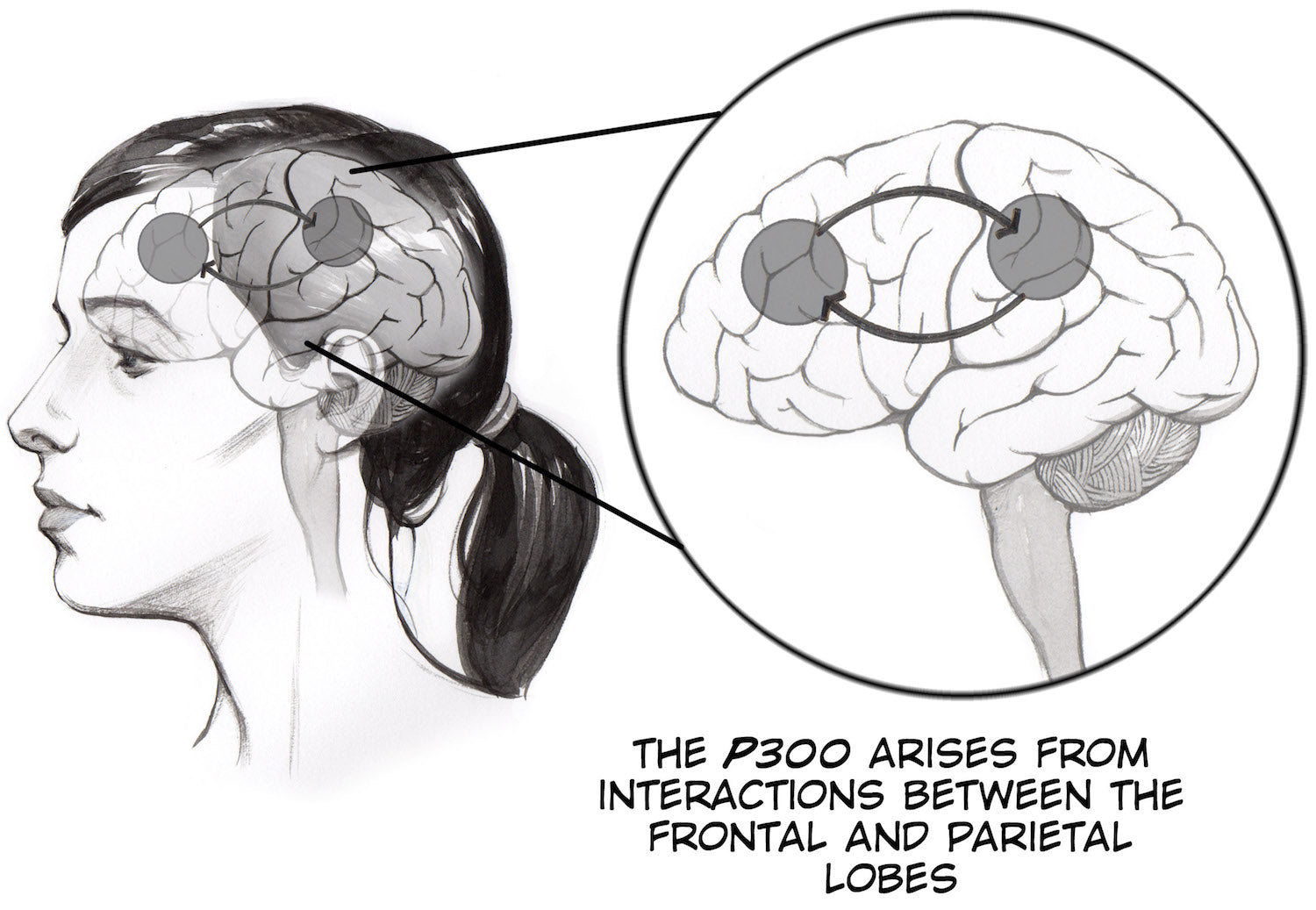
Electrode & Device Setup:
- Place the BYB headband so pads straddle Pz (10–20 system) and add conductive gel.
- Stick a ground patch behind the ear and clip the black lead; red leads on the pads.
- Plug the orange cable into the Human SpikerBox and connect to your laptop or phone.
- Open SpikeRecorder, choose the EEG preset (1–40 Hz) and enable the 50/60 Hz notch filter.
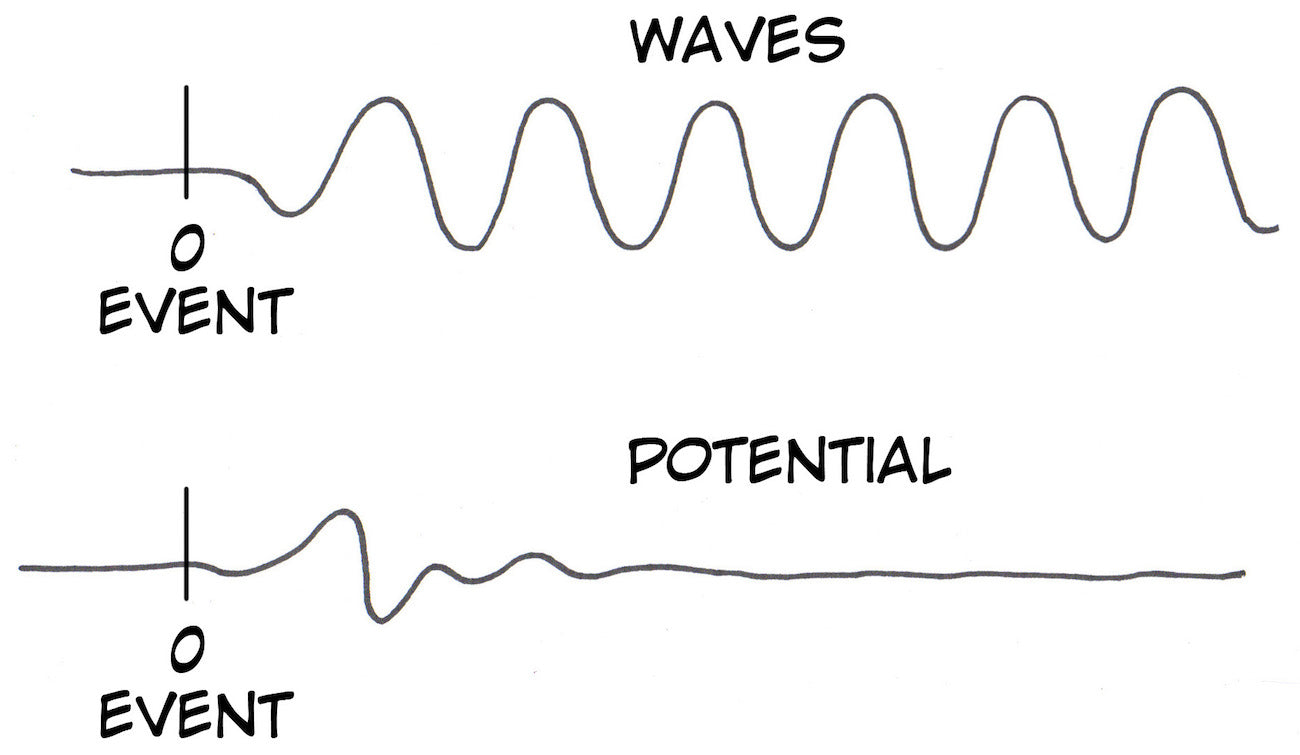
Run the Oddball Task:
- Wear headphones and play the supplied WAV file (90 % 600 Hz standard tones, 10 % 900 Hz oddballs, 1 s apart) which contains embedded timing markers.
- Press Record in SpikeRecorder. Relax, count oddballs silently, minimise blinking.
Save & Analyse:
- Stop recording; save the EEG as a WAV file.
- Run the provided Python/MATLAB script to epoch −100 ms → 800 ms around each marker, baseline‑correct, and average oddball vs. standard trials.
- Locate the largest positive peak between 250 ms and 600 ms — your P300.
Results & Analysis
Oddball averages should reveal a 10–20 µV P300 absent in standard trials. A strong P300 implies conscious processing of novelty and can be used to assess awareness or drive P300‑based interfaces. Method adapted from Kelly et al. 2023 (PMC11441432) as well as Smith K, Pilger A, Amorim MLM, Mircic S, Reining Z, Ristow N, Miller D, Leonhardt A, Donovan JC, Meier M, Marzullo TC, Serbe-Kamp E, Steiner AP, Gage GJ. Low-Cost Classroom and Laboratory Exercises for Investigating Both Wave and Event-Related Electroencephalogram Potentials. J Undergrad Neurosci Educ. 2024 Aug 31;22(3):A197-A206. doi: 10.59390/YNPH4485. PMID: 39355672; PMCID: PMC11441432..
-
Related Products


